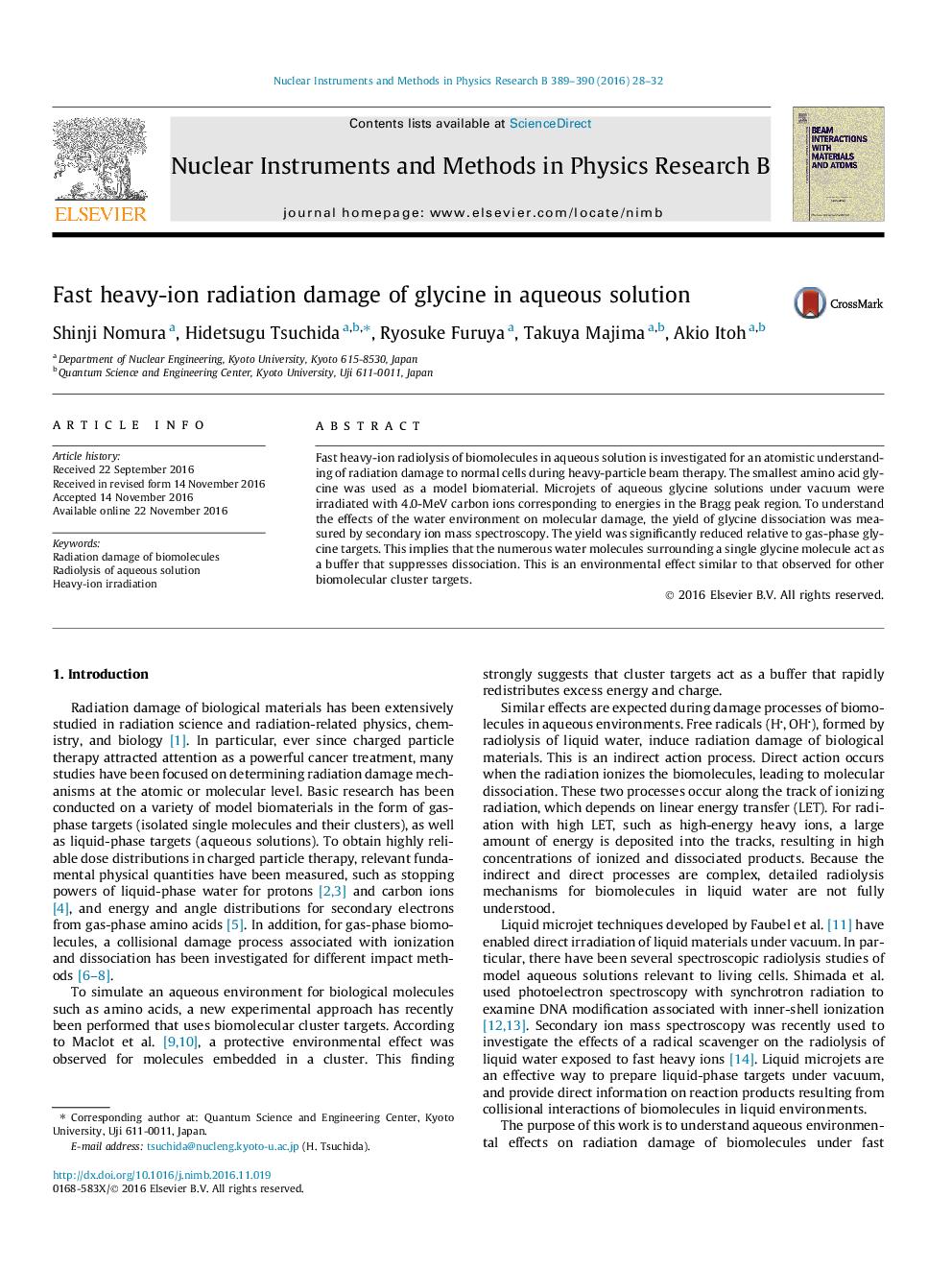| Article ID | Journal | Published Year | Pages | File Type |
|---|---|---|---|---|
| 5467948 | Nuclear Instruments and Methods in Physics Research Section B: Beam Interactions with Materials and Atoms | 2016 | 5 Pages |
Abstract
Fast heavy-ion radiolysis of biomolecules in aqueous solution is investigated for an atomistic understanding of radiation damage to normal cells during heavy-particle beam therapy. The smallest amino acid glycine was used as a model biomaterial. Microjets of aqueous glycine solutions under vacuum were irradiated with 4.0-MeV carbon ions corresponding to energies in the Bragg peak region. To understand the effects of the water environment on molecular damage, the yield of glycine dissociation was measured by secondary ion mass spectroscopy. The yield was significantly reduced relative to gas-phase glycine targets. This implies that the numerous water molecules surrounding a single glycine molecule act as a buffer that suppresses dissociation. This is an environmental effect similar to that observed for other biomolecular cluster targets.
Keywords
Related Topics
Physical Sciences and Engineering
Materials Science
Surfaces, Coatings and Films
Authors
Shinji Nomura, Hidetsugu Tsuchida, Ryosuke Furuya, Takuya Majima, Akio Itoh,
